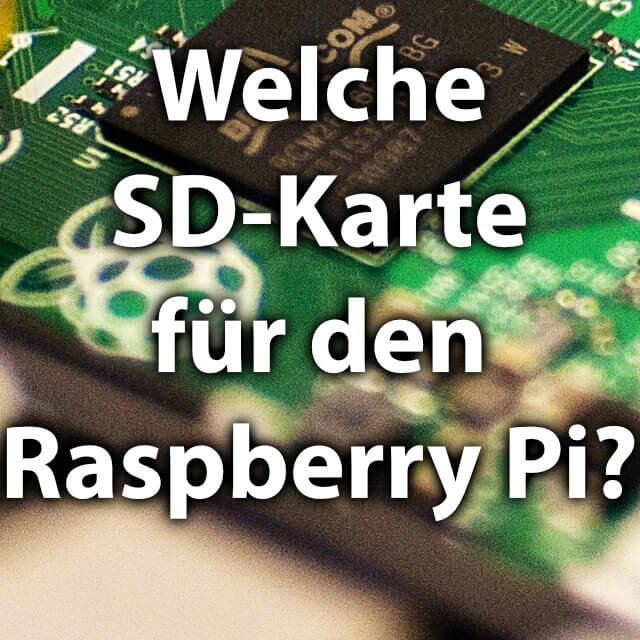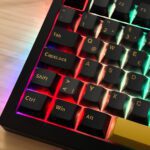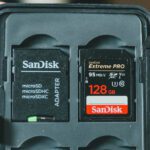An SD card is an elementary part of the Raspberry Pi, a kind of minicomputer for mobile applications or hobby projects in computing, programming and gaming. The memory card replaces the hard drive and contains, among other things, the so-called bootloader, which is responsible for booting and starting the Rasp Pi. As you probably know, there is one thing to do with the selection of SD cards different classes, speeds and bus assignments. Therefore the question arises: Which is the right SD card for the Raspberry Pi? Here are a few suggestions.

Chapter in this post:
Which SD card for the Raspberry Pi?
Several factors play into choosing the right one memory card for the Rasp Pi inside. On the one hand the version of the minicomputer - i.e. Raspberry Pi 1, Raspberry Pi 2 and Raspberry Pi 3 and their sub-models - and on the other hand the specifications of the memory cards. Here you should buy at least a Class 10 SD card or Class 10 microSD, as this enables data exchange of at least 10 MBit/s. If you pay more attention to the UHS bus, then UHS I (Roman 1) is basically enough. The Roman numeral I, usually in a U, indicates that up to 50 MBit/s are possible with a minimum write speed of 10 MBit/s.
Worth reading: SD card speed classes
Furthermore, when choosing the right SD card or microSD for the Raspberry Pi HC memory cards are recommended, i.e. SDHC and microSDHC cards. SDHC or SD 2.0 stands for "High Capacity" and describes cards that have up to 32 GB of memory and the write and read speeds required to manage the memory. An even bigger replacement for the hard disk in the Raspberry Pi are SDXC cards (SD 3.0), which as "SD eXtended Capacity" can have up to 2.048 GB, i.e. 2 TB. Depending on the operating system you want to boot on the Rasp Pi, 4 to 8 GB are enough. So SDHC and microSDHC are ideal.
Memory cards for Raspberry Pi 1 A and B
A regular SD memory card is 32 mm long and 24 mm wide; and that is also the format that is provided for in the A and B versions of the Rasp Pi 1. One should keep this in mind when buying - and perhaps also that certain brands offer better shelf life than others. From experience, I therefore tend to recommend SanDisk products in the following. So far, I have not had any problems with the manufacturer even when using many write cycles, which is also important with the Raspberry Pi. Therefore, in my opinion, these are the suitable SD cards for the Raspberry Pi 1 A and B:
NOOBS SD card (microSD with adapter)
Of course, the makers of the Raspberry Pi also have memory cards specially recommended or licensed for use with minicomputers. The so-called NOOBS microSD (NOOBS stands for New-Out-Of-Box-Software) is a 16 GB / 32 GB microSDHC card from SanDisk with an adapter on which the Raspberry Pi logo is printed. In short: the official recommendation for preparing the memory of the pocket computer comes from the manufacturer SanDisk:
Memory card for Raspberry Pi A +, B +, 2B and 3
The newer and current versions of the Rasp Pi are compatible with the smallest memory cards, which are mostly used in Android smartphones, cameras and other devices and have a width of 11 mm and a length of 15 mm. In short: they are microSD or microSDHC memory cards. In addition to the special NOOBS card with operating system (see above), you can also use these empty micros for the very individual configuration or the use of a different OS:
FAQ and troubleshooting
Here I have put together a few questions and answers about the replacement hard drive in the minicomputer. This is how you should prevent or fix problems and continue to work successfully on your project:
- Why should I buy an “expensive” branded memory card?
Cheap manufacturers often do not deliver good quality, which means less reliable write cycles and also not always exact measurements. The cheap card could therefore not fit well / not at all, wobble and / or be over quickly. - Despite stable cards under little load or despite brand cards, more work leads to failures. What to do?
This is where the power source can be the problem. Checks the voltage between TP1 and TP2 in the case of complex tasks or many tasks running in parallel. If this falls below 4,75 V, then you should perhaps choose a better power source or a higher quality USB cable for the power supply. - How can I extend the life of the memory and the device itself?
In order to achieve the maximum service life of the memory card and other components, shut down the Raspberry Pi properly before switching it off or terminate all processes. For this you can use the command “sudo halt” (without quotation marks). Then the power LED should blink. This is the sign that the device can be safely switched off. - Despite all measures and good treatment, there are still problems with the memory card. What's going on there?
Perhaps you overclock your Rasp Pi? If you use an overclocked model, this can have a negative effect on the memory and cause damage or malfunctions again and again. - I still have one of the recommended cards lying around here. How do I format this to load an OS to boot the Raspberry Pi?
Instructions for formatting removable storage devices on the Mac under macOS and on the PC under Windows can be found in this guide. Not only works with the USB stick;)
Related Articles
After graduating from high school, Johannes completed an apprenticeship as a business assistant specializing in foreign languages. But then he decided to research and write, which resulted in his independence. For several years he has been working for Sir Apfelot, among others. His articles include product introductions, news, manuals, video games, consoles, and more. He follows Apple keynotes live via stream.
The page contains affiliate links / images: Amazon.de










Thanks for the informative contribution.
Are there new recommendations for the Raspberry Pi 4 in the meantime or can the 3 series be used without loss of performance (???? is how you write it ????)?
Best Regards